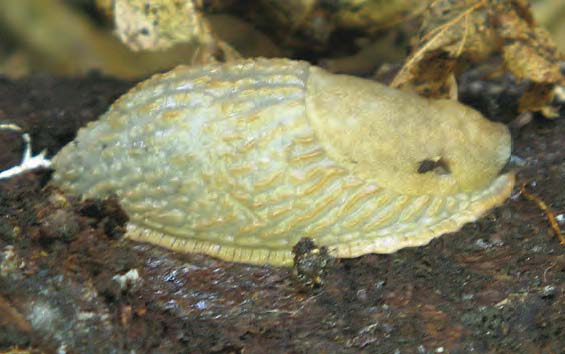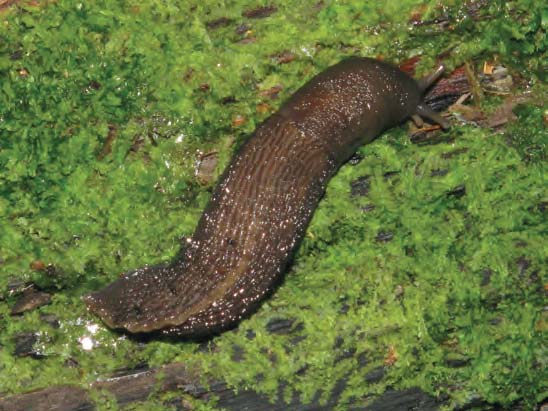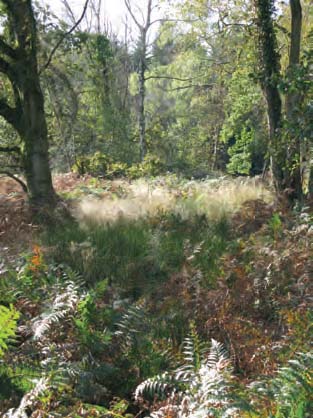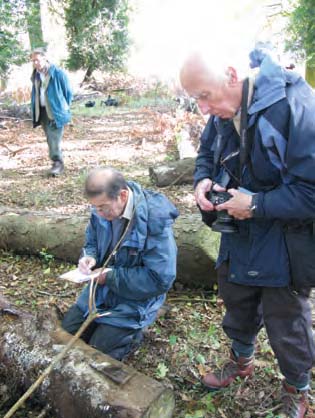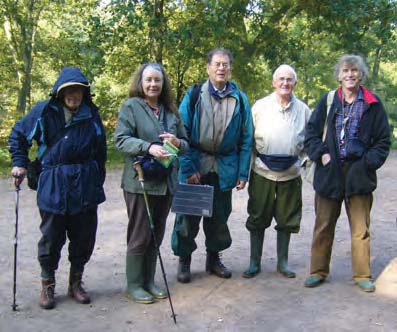Issue
18
Page
15
|
This meeting aimed at examining Forestry Commission sites in the middle and towards the east side of the Forest of Dean for the presence of the old woodland fungus eater, the Slender Slug, Malacolimax tenellus [Figures 2 slug and Fig 7 attendees]. This species was recorded from near Symonds Yat in 1920 by Charles Oldham, but was not refound in the Forest and Wye Valley until 1989. Since then there have been scattered records spread over the area from the north end of the Forest to near Blakeney.
Three of the 8 sites were selected as having pre 2007 records; the others were chosen as appearing to be potential sites for the slug. Each site was searched for 30 to 60 minutes.
Sites were all on generally acid Carboniferous rocks and were in mixed deciduous woodland, or wood pasture, managed to be dominated by Oak or Beech, with varying amounts of fallen timber.
Comments on assemblages, a listing of species found and of acknowledgements, including the names of attendees is below.
Sites in order of visit were:
Although 37 species were found during the two days, mollusc assemblages were not highly diverse, with slugs and “Glass snails,” Zonitidae, conspicuous in leaf litter and under logs. The Zonitdae included the calcifuge Zonitoides excavatus, at 5 sites. The finds are listed by site below. Along with M. tenellus at its 4 sites the fauna included Limax cinereoniger another old woodland species (4 sites). Arion flagellus was found at 6 sites. The commonest helicid was the “Brown snail”, Zenobiella subrufescens which is associated with old woods but can live in adjoining low green herbage and small trees, including on this trip, Holly, Clematis, Bracken, and grasses. Trochulus striolatus was found at 3 sites which was unexpected, in one case associated with trackside vegetation.
It was noticeable that damper sites, such as near the Blackpool Bridge at Wench Ford, the stream in Sallowvallets and Deschampsia grass tussocks at Bullocks Beech appeared richer in species that the drier bare areas of leaf litter and fallen wood.
Acknowledgements: With many thanks to Denise Baker for arranging Forestry Commission permission for this event, to Rosemary Hill, Ron Boyce, David Haigh, Keith Alexander, John Fleming, and Peter Long for attending and providing most of the finds on the day, and to David Haigh for accompanying me on most of the preliminary site checks. Ron Boyce and Rosemary Hill provided photographs
|
Figure 1: Pale form of Arion flagellus found at Foxes Bridge (Ron Boyce)
Figure 2: Malacolimax tenellus with a nematode at Foxes Bridge(Ron Boyce)
Figure 3: Limax cinereoniger"juvenile" at Cannop Ponds (Ron Boyce)
Figure 4: Woodland scene at Foxes Bridge (Rosemary Hill)
Figure 5: Ron Boyce, and Peter and David Long at Foxes Bridge (Rosemary Hill)
Figure 6: The site at Bullocks Beech (David Long)
Figure 7: Attendees on 12 October, Ron Boyce, Rosemary Hill, Peter Long, David Haigh, John Fleming (David Long) |

